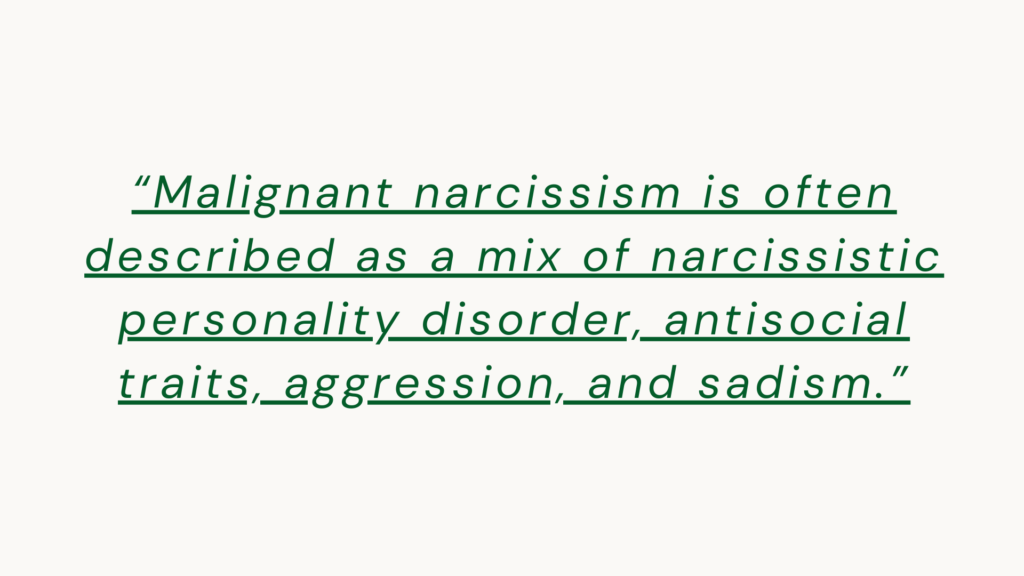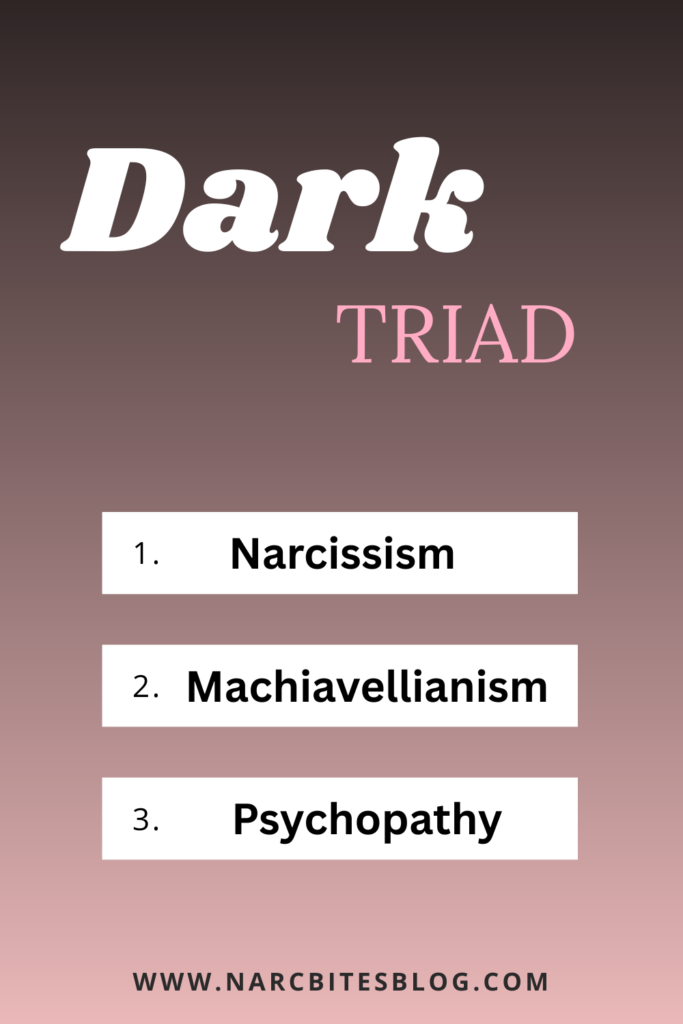You’ve probably heard the word “narcissist” tossed around in conversations like confetti, usually in that slightly bitter tone people reserve for exes or bosses. But what happens when narcissism crosses a darker threshold? When the usual charm, manipulation, and self-absorption blend with cruelty, paranoia, and a thirst for domination? That’s when we enter the territory of malignant narcissism, and it is nothing like the casual label pop culture has popularized. So how do you know if you are dealing with a malignant narcissist, not just a difficult person with a big ego, but someone whose personality can leave psychological wreckage behind them?
What Defines a Malignant Narcissist
At first glance, a malignant narcissist can look like your average overt narcissist, charming, confident, the life of the room. But dig deeper and the mask starts to crack.
A malignant narcissist isn’t just self-absorbed. They are often vindictive, paranoid, and devoid of empathy. They don’t just want to be admired, they want to dominate. To them, human connection isn’t about intimacy or mutuality. It’s about control, supply, and survival.
What makes them different from other narcissists is the added darkness. Malignant narcissism is often described as a mix of narcissistic personality disorder, antisocial traits, aggression, and sadism. Think of it as narcissism weaponized. You’re not just dealing with someone who craves admiration. You’re dealing with someone who will psychologically bleed you dry to get it and feel no remorse.
This level of narcissism does not develop in a vacuum. Often, these personalities were formed in chaotic, invalidating, or highly controlling childhood environments. Many malignant narcissists learned early on that power, not connection, ensures survival. Some even mimicked abusive caregivers, internalizing cruelty as normal. These formative roots make it harder to undo the behavior because it is not a mask, they have become the mask.
In adulthood, this plays out in dangerous ways. They may gravitate toward positions of authority, not for leadership, but for control. Or they may take on the role of a victim when it benefits them, manipulating sympathy to discredit their targets. They become chameleons of emotional warfare.
The Origins of the Term
The phrase “malignant narcissism” comes from Otto Kernberg, a psychoanalyst who in the 1960s and 70s tried to describe patients whose narcissism was not only grandiose but actively destructive. For Kernberg, this was not simply another subtype of narcissism but a particularly toxic constellation of traits: narcissistic personality disorder combined with antisocial features, a tendency toward paranoia, and sadistic impulses.
He saw it as a borderline condition between narcissism and outright psychopathy, a dangerous hybrid that could be especially resistant to treatment. While a grandiose narcissist might crave admiration and validation, Kernberg’s malignant narcissist seemed driven by domination and cruelty itself. The term stuck because it captured a clinical reality: some narcissists are not just self-absorbed, they are structurally dangerous to the people around them.
Common Malignant Narcissist Traits
The most telling malignant narcissist traits include:
- Exploitativeness: Not just using people, but using them intentionally and without guilt.
- Paranoia: They suspect disloyalty everywhere. Trust is a foreign concept.
- Aggression: Emotional, psychological, and sometimes physical.
- Superiority complex: Without any capacity for humility or reflection.
- Lack of empathy: Not just absence, but an active disdain for vulnerability.
- Manipulation layered with cruelty: They twist reality, then punish you for reacting to the twisted version.
They may gaslight so thoroughly you begin to feel like you are unraveling. And in the rare moments when the mask slips, what you see is rage, cold, calculating, and surgical.
They also tend to hold grudges like sacred texts. If you embarrass them, even accidentally, they will remember it forever. They do not forgive. They wait. They bide time. And when they retaliate, it is strategic.
Another insidious trait is how they turn people against each other. Triangulation is their bread and butter. If you notice sudden distance in your relationships with friends or family after bringing this person into your life, that is no coincidence. It is architecture. They thrive in isolation, both theirs and yours.
Signs of a Malignant Narcissist in Everyday Life
So what does it actually look like?
- They never let you win, even in small ways. Conversations are battles. Relationships are games they intend to dominate.
- They humiliate subtly, often in front of others, and smirk when someone flinches.
- They are obsessed with hierarchy, needing to be at the top, even if it means sabotaging those around them.
- They love with a weaponized touch, offering warmth only when it benefits them, withdrawing it the second you need it.
- They see kindness as weakness, and weakness as something to exploit.
They also create chaos as a way to stay relevant. They will start arguments, sow division, or triangulate others simply to keep themselves at the center. If peace emerges, they will destroy it. Peace is a threat, because it makes their need for control irrelevant.
Even in work settings, you may see this: constant subtle undermining of others, strategic flattery of superiors, and character assassination dressed up as concern. Their charm is selective, their cruelty calibrated. They know who to impress and who to dismantle.
How to Spot a Malignant Narcissist
Spotting them requires more than reading a few quotes on Instagram. They are often skilled at presenting a socially charming façade, especially in the early phases of a relationship. But behind the mask is a person who:
- Takes pleasure in your confusion
- Escalates control over time
- Punishes independence
- Uses guilt and fear as compliance tools
They also lack consistency. What they love one day, they despise the next. You will find yourself adjusting constantly, your tone, your words, your presence, just to avoid triggering the next explosion. This is how they break you, not with one grand betrayal, but with a thousand tiny emotional paper cuts.
And here is the most chilling part: the pain they cause is not always collateral damage. Often, it is the point.
If your intuition keeps whispering, “This isn’t normal,” listen. It’s probably right. And if your friends seem charmed while you are drained, don’t doubt yourself. Malignant narcissists often manage public impressions brilliantly while keeping their cruelty private. It is how they stay unchecked.
Malignant Narcissism and the Dark Triad
One of the reasons malignant narcissism has drawn so much attention is its overlap with what psychologists call the Dark Triad: narcissism, Machiavellianism, and psychopathy. On the surface, malignant narcissists appear to embody all three.
- From narcissism, they inherit the grandiosity, entitlement, and hunger for admiration.
- From Machiavellianism, they display cunning, manipulation, and a ruthless focus on self-interest.
- From psychopathy, they echo callousness, aggression, and lack of remorse.
But malignant narcissism is not simply the sum of the triad. What distinguishes it is the paranoid edge Kernberg described, the constant suspicion that others are out to humiliate or betray them. This paranoia fuels vindictiveness and keeps the cycle of cruelty alive. Psychopaths may be cold and calculating, but they are often less concerned with imagined slights. Malignant narcissists, by contrast, are hypersensitive to injury and retaliate when they feel disrespected.
This makes them uniquely volatile. While a psychopath might manipulate for gain without emotional investment, a malignant narcissist manipulates both for gain and for the satisfaction of punishing perceived threats. It is personal, even when it is destructive.
Malignant Narcissism vs. Typical Narcissism
It is easy to lump all narcissists into one category, but not all narcissists are built the same.
- Grandiose narcissists want praise and admiration. They can be arrogant, but not always malicious.
- Vulnerable narcissists are emotionally needy and sensitive to rejection. Their harm is often passive.
- Malignant narcissists combine both, but add cold calculation, exploitation, paranoia, and rage.
They aren’t just insecure, they are dangerous. While a regular narcissist might ignore your boundaries, a malignant one will destroy them for sport. And while all narcissists seek supply, malignant ones want something darker: domination.
In some cases, experts suggest they resemble those with antisocial personality disorder, bordering on psychopathy. They do not experience empathy the way most people do, and their moral compass is, at best, a convenience and, at worst, non-existent.
Why Malignant Narcissism Is So Dangerous
Because it often flies under the radar, especially in relationships. Malignant narcissists are often seen as intense or passionate at first, even by therapists or friends. They present as high-functioning. Intelligent. Capable. Even charming.
But the impact on their targets?
- Chronic anxiety
- Eroded self-esteem
- Hypervigilance
- Trauma responses such as dissociation or learned helplessness
Living with one often feels like being psychologically waterboarded, a slow, unrelenting erosion of self. They don’t snap. They build tension. Slowly. Quietly. You never know which version of them you will meet, and that is exactly how they want it.
And the more entangled you become, the harder it is to distinguish manipulation from genuine connection. This is by design. They want you to forget the difference.
Why They Hurt the Ones Closest to Them
Because proximity equals vulnerability. And to a malignant narcissist, vulnerability equals weakness to exploit.
Partners, children, even close friends, these are the people they target with the most precision. Not because they hate them, but because these relationships provide the most control.
You will notice the pattern: love-bombing followed by devaluation. Gaslighting followed by punishment. They create a cycle of trauma that keeps their target stuck, hoping the good version of them will return. Spoiler: that version was always an illusion.
They don’t want a relationship, they want control disguised as love. The moment you assert your independence or question the narrative, you become the enemy.
Some malignant narcissists even weaponize therapy language, twisting words like boundaries or trauma to shift blame. They might say you are gaslighting them, flipping the script in a way that is both confusing and damaging. They use your emotional literacy against you.




